#virginia dwan
Explore tagged Tumblr posts
Text


Taming The Garden is Salomé Jashi's 2021 documentary about the Georgian oligarch-turned-politician who collected over 200 massive trees from around the country and transplanted them next to his Black Sea-front estate.
The Shekvetili Dendrological Park opened to the public in 2020, and looks quietly wild af.
It also links back to some iconic works of Land Art in the West, in that they all exist by the grace of some industrialist or heiress or whatever.
#salomé jashi#taming the garden#shekvetili dendrological park#robert smithson#floating island#michael heizer#virginia dwan#and on and on and on#land art is about real estate
3 notes
·
View notes
Text
Lost, but Not Forgotten: What Price Beauty? (1925)
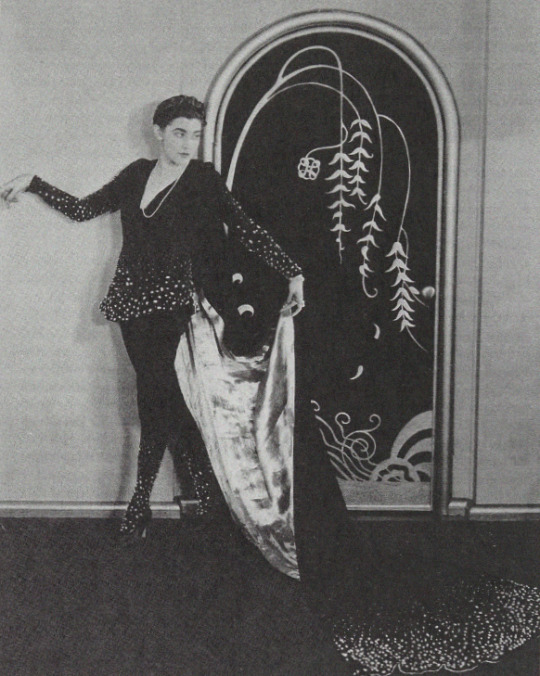
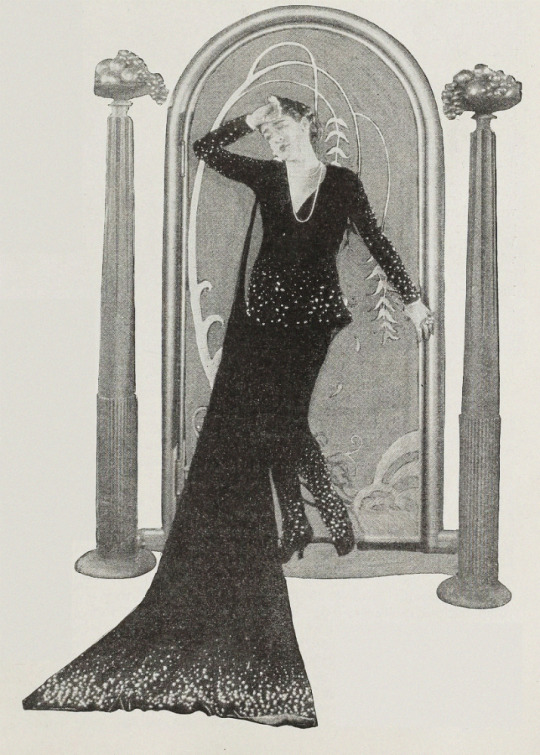
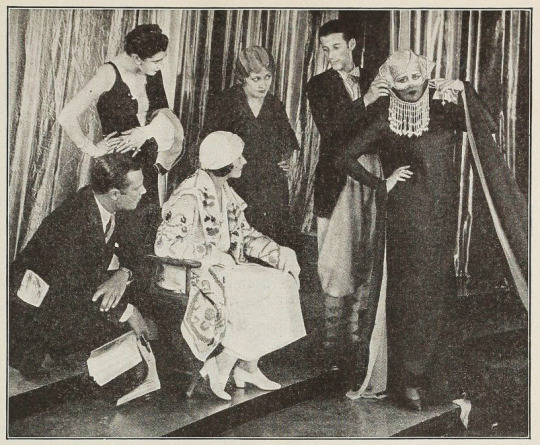
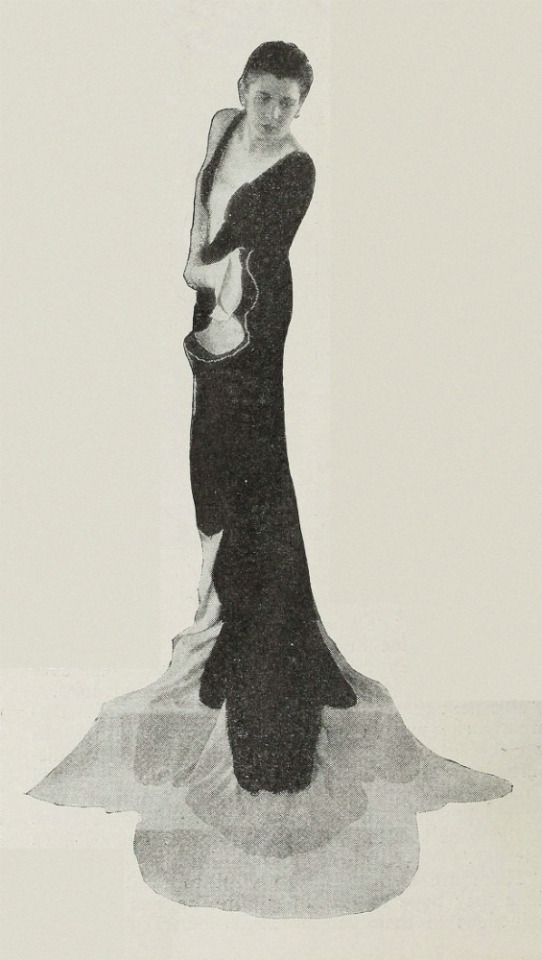
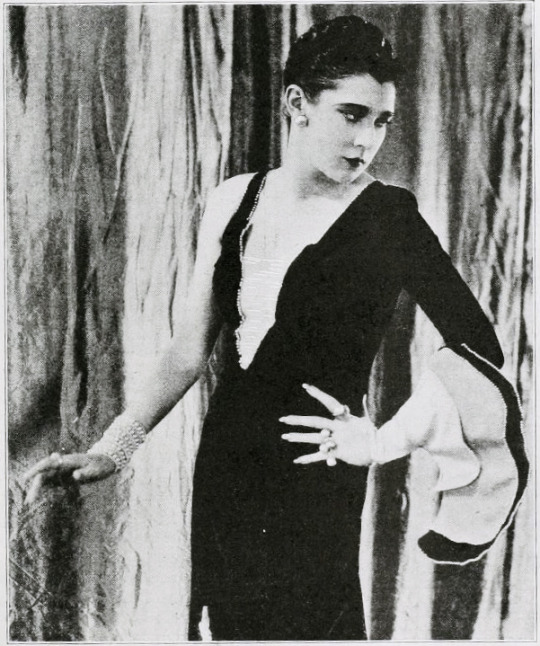
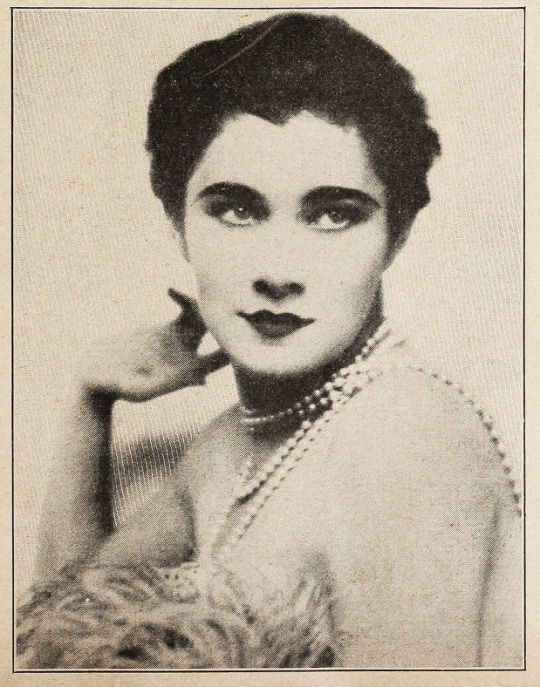
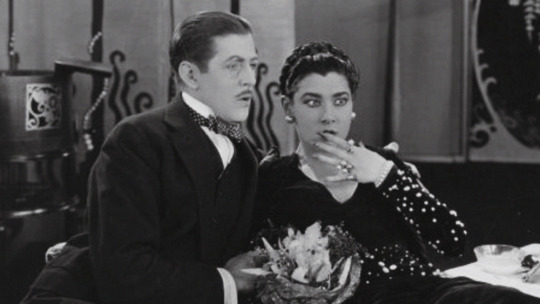
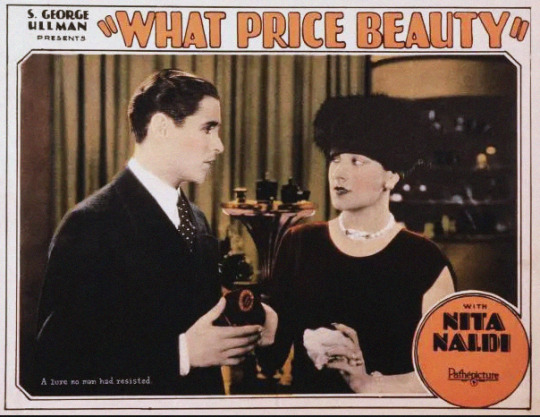
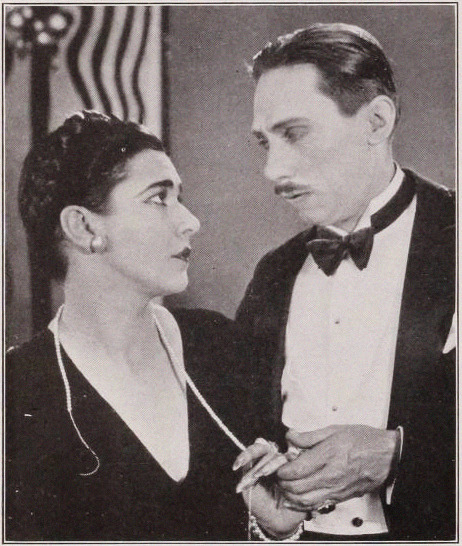
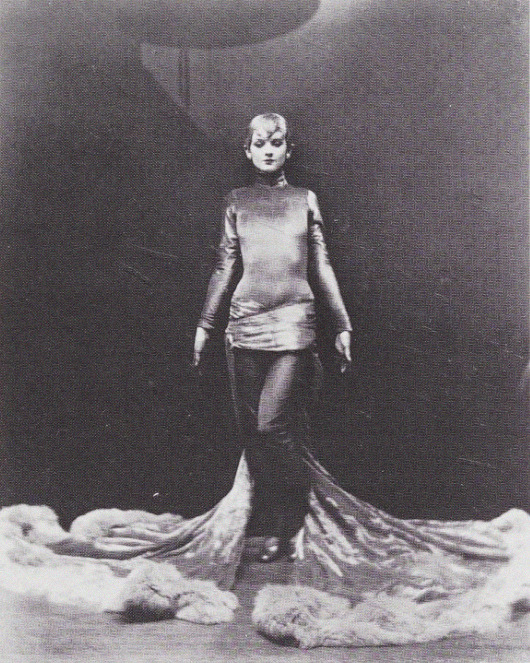
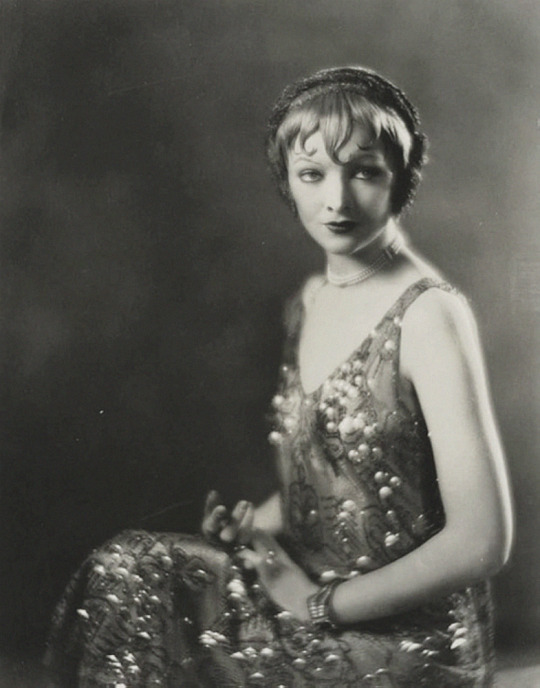
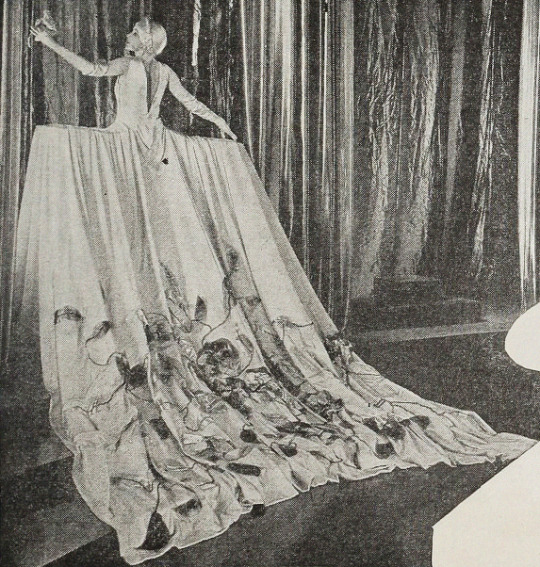
Direction: Thomas Buckingham
Scenario & Story: Natacha Rambova
Titles: Malcolm Stuart Boylan
Production Manager: S. George Ullman
Camera: J. D. Jennings
Art Direction: Natacha Rambova
Production Design: William Cameron Menzies
Costume Design: Adrian
Studio: Circle Films (Production) & Pathé Exchange (Distribution)
Performers: Nita Naldi, Pierre Gendron, Virginia Pearson, Dolores Johnson, Myrna Loy, Sally Winters, La Supervia, Marilyn Newkirk, Victor Potel, Spike Rankin, Rosalind Byrne, Templar Saxe, Leo White Maybe: John Steppling, Paulette Duval, Dorothy Dwan, and Sally Long
Premiere: None, general release: January 22, 1928
Status: Presumed entirely lost.
Length: Variously reported as 5000 and 4000 feet (more commonly listed as 4000) or 5 reels
Synopsis (synthesized from magazine summaries of the plot):
Mary, a.k.a. “Miss Simplicity��� (Dolores Johnson) is a starry-eyed, country-to-city transplant. She works at a beauty shop operated by a glamorous matron (Virginia Pearson) and owned by the young and handsome Clay (Pierre Gendron).
Mary is in love with Clay, but doesn’t have the nerve or feminine wiles to woo him. The uber-sophisticated Rita (Nita Naldi), however, is chock full of nerves and wile. Rita’s fancy clothes and perfumes and advanced flirting skills leave Mary feeling destined to fail at winning Clay’s amorous attention.
These feelings sublimate into an expressionistic dream for Mary, where she finds herself transformed into a sophisticate like Rita. Her boss is seen as a magnificent wizard, converting her clients into archetypes of glamour: exotic types, flappers, and sirens. Her competition, Rita, is seen as a bewitching spider.
In the end, surprising Mary, it turns out that her fresh-faced, unassuming charm is more appealing to Clay than Rita’s more practiced charm.
Additional sequence(s) featured in the film (but I’m not sure where they fit in the continuity):
Scene of the trials and tribulations of a fat woman trying to “reduce”
Points of Interest:
Only one quarter of Nita Naldi’s Hollywood films have survived (7 extant titles/21 lost or mostly lost titles).
——— ——— ———
What Price Beauty? was the first and only film produced under Natacha Rambova’s own company. Coordinating production for the film was the business manager for Rambova and her husband Rudolph Valentino, S. George Ullman. The couple met Ullman when he was working for Mineralava beauty products, the sponsor of their 1922-3 dancing tour.
When Rudolph Valentino entered into a contract with United Artists, said contract reportedly stipulated that Valentino-Rambova were not a package deal. Therefore, Rambova could not collaborate with Valentino on his productions for United. Possibly as consolation, Ullman funded a production for Rambova while Valentino worked on The Eagle (1925, extant).
For Rambova, What Price Beauty? was meant to be a proving ground for her idea that an artistic film could be made on a modest budget. She also wished to remind people that she was a skilled artist in her own right.
In an interview in Picture Play Magazine from August 1925, Rambova asserts:
“…I do not want the production in any sense to be referred to as high-brow or ‘arty’. My reputation for being ‘arty’ is one of the things that I have to live down, and I hope by this picture, which is a comedy—even to the extent of gags and hokum—to overcome that idea. “A woman who marries a celebrity is bound to find herself in a more or less equivocal position, it seems, and her difficulties are only increased when she happens to have had some artistic ambitions of her own before her marriage. I am afraid that those who have accused me of meddling in my husband’s affairs forget that I enjoyed a certain reputation and a very good remuneration for my work as well before I became Mrs. Valentino.”
“What I desire personally is simply to be known for the work which I have always done, and that has brought me a reputation entirely independent of my marriage.”
There isn’t a vast amount of information on what exactly prevented WPB from gaining release in a timely fashion. If the film was truly nothing more than a ploy to separate Rambova from Valentino, that would be an absurd waste of time, money (~$80,000 in 1925 USD), and talent—Rambova employed soon-to-be famous designer Adrian for costumes and William Cameron Menzies for set decoration. Not to mention that, in front of the camera, Nita Naldi was still a popular star and the Rambova discovery, Myrna Loy, made her quickly hyped debut.
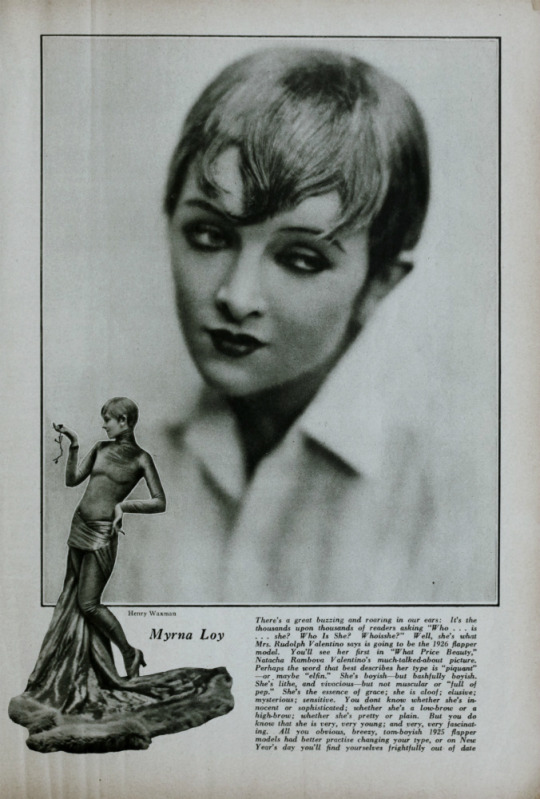
When Pathé finally purchased WPB for distribution in 1928, they did very little to promote the film. Naldi had moved on from the film industry—as had Rambova. And, while Loy hadn’t become the huge star we know today by January of 1928, Warner Brothers had already given her top billing in a number of films. Pathé barely mentions Loy’s role in the little promotion they did do.
To put WPB’s release in the context of Rambova’s personal/professional biography (which you can read more about here):
June/July 1925 – WPB is completed, Rambova and Valentino separate (in July according to Rambova’s mother as quoted in Rambova’s book Rudy)
August 1925 – Rambova leaves Hollywood for New York City, reportedly to negotiate distribution for WPB. She and Valentino would see each other in person for the last time. Rambova leaves NYC for Europe.
September 1925 – Valentino draws up a new will disinheriting Rambova
November 1925 – Rambova returns to the US to act in a film, When Love Grows Cold (1926, presumed lost), a title which Rambova objected to
December 1925 – Rambova files for divorce
August 1926 – Valentino dies
January 1928 – WPB is finally released with no fanfare by Pathé
In my research for my Rambova cosplay, the suspicious production/release history for this film stood out to me. I hoped that I might find some reliable evidence of whether WPB was a consolation prize and/or a scheme to keep Rambova and Valentino apart. Honestly and unfortunately, circumstantial evidence does support it!
After poring over what few contemporary sources cover WPB, there seemed to be no plan in place for distribution as the film was in production. United Artists, at whose lot the film was shot, claimed to have nothing to do with its release. Ullman had a news item placed about negotiating the distribution rights in the East. However, in Ullman’s own memoir, he admits that when he travelled to New York with Rambova, it was in a personal, not professional capacity—navigating the couple’s separation. (Ullman’s book contains many disprovable claims and misrepresentations, so anything cited from it should be taken with a grain of salt.) That said, Ullman’s failure to secure even a modest distribution deal for WPB in a reasonable timeframe speaks to how ill-founded Valentino’s and Rambova’s trust in his business acumen was.
WPB cost $80,000 to produce, which converts to $1.4 million in 2023 USD. While that wasn’t an outrageous budget for a Hollywood feature film at the time, especially one with such advanced production value, it’s certainly an absurd cost if the goal was only to separate a bankable star from his wife and collaborator.
A close friend and employee of Valentino and Rambova, Lou Mahoney, recalled in Michael Morris’ Madam Valentino:
“The picture was previewed at a theater on the east side of Pasadena, and Mahoney remembered the audience reaction as positive, but, thereafter, What Price Beauty? was consigned to oblivion. Mahoney knew why: ‘No help came from anyone, no thoughts of trying to get this picture properly released. No help came from Ullman, Schenck, or anybody else. Their whole thought was that if the picture were a success, Mrs. Valentino would be a success. She would then start producing under the Rudolph Valentino Production Company. But this nobody wanted—except herself, and Mr. Valentino.’”
——— ——— ———
The few reviews from 1928 that I was able to find are not very complimentary of WPB. The critics seem thrown by the film’s tone or genre—reading it as a drama. (Part of that is Pathé’s fault as they listed it as one.) But, according to sources contemporary to WPB’s production, it was intended to be a farcical satire of the beauty industry and social expectations of feminine beauty. Given the simple story, the intentional typage of characters (“The Sport,” “The Sissy,” and “Miss Simplicity”), and the over-the-top-but-on-a-budget art design of WPB, all signs point to high camp. In 1925 as well as 1928, the stodgier side of the critical spectrum would likely fail to see its appeal.
It’s a true shame we can’t find out for ourselves how good, bad, or campy WPB was as of yet, but here’s hoping the film resurfaces!
More about Rambova
GIFs of some of her design work on film
☕Appreciate my work? Buy me a coffee! ☕
Transcribed Sources & Annotations over on the WMM Blog!
#1920s#1925#1928#natacha rambova#nita naldi#cinema#silent cinema#american film#independent film#classic film#classic movies#film#silent film#silent movies#silent era#classic cinema#silent comedy#lost film#film history#history
24 notes
·
View notes
Text

Holmes Herbert, June Collyer, and George O'Brien in East Side, West Side (Allan Dwan, 1927)
Cast: George O'Brien, Virginia Valli, Holmes Herbert, J. Farrell MacDonald, Frank Allworth, June Collyer, John Miltern, Dore Davidson, Sonia Nodell, Frank Dodge, Dan Wolheim, William Frederic, Jean Armour. Screenplay: Allan Dwan, based on a novel by Felix Riesenberg. Cinematography: Theodore J. Pahle, George Webber.
In Allan Dwan's silent East Side, West Side, big, likable George O'Brien plays big, likable John Breen, a naïf in the city. O'Brien also played a naïf in the city in his other big film of 1927, F.W. Murnau's Sunrise: A Song of Two Humans. Murnau's film is an acknowledged masterpiece and Dwan's isn't, though Sunrise is melodrama striving to be art, whereas East Side, West is unabashed melodrama, rags to riches, interrupted romances, secret parentage, self-sacrificing heroism, sneaking villainy, happy ending and so on. Somehow Dwan manages to stuff all that, plus a subway cave-in and a sinking passenger liner, into a tidy 90 minutes. It all begins with O'Brien's Breen looking at the Manhattan skyline from the barge he lives on with his mother and stepfather, and longing to be part of it all. He gets his wish, sort of, when the barge is swamped by a passing ship and his parents drown. He swims to shore and hides out in the cellar of the Lipvitch family's home. They take him in and put him to work assisting Papa Lipvitch in the tailor shop, and he begins a shy flirtation with the Lipvitch daughter, Becka (Virginia Valli). A suitor for Becka's hand, known as Flash (Frank Allworth), spots Breen's talent for fisticuffs and helps him get a start as a prizefighter. When he begins to make a name for himself, he catches the attention of the wealthy developer Gilbert Van Horn (Holmes Herbert), who soon recognizes that Breen is his long-lost son -- he was forced to annul his marriage to Breen's mother, who decided never to tell her son about his father. Uncertain whether to reveal the truth to Breen, Van Horn asks Breen what he would do if he ever met his father: "I'd kill him!" Breen replies. (The italics are in the title card.) Van Horn decides to keep the secret, but he takes Breen in and tries to fulfill his desire to become a builder in the city he loves. He also introduces him to his pretty ward, Josephine (June Collyer), setting up a rivalry with Becka. Dwan never wastes time putting all this plot into place, which proceeds as you might expect, the story flavored with evocative shots of the city. The film touches only lightly on the ethnic character of the East Side: The Irish are seen as pugnacious and clannish, and the Lipvitches are obviously meant to be Jewish. There's some stereotyping in the penny-pinching character of Papa Lipvitch (Dore Davidson), but the issue of intermarriage is never raised in the case of Becka and Breen. East Side, West Side is the only silent film in the Criterion Channel's retrospective of Allan Dwan's work, but it makes me wish there were more.
2 notes
·
View notes
Photo

Silver Apples performing in New York City, 1968. Photographs by Virginia Dwan.
RIP Simeon Coxe
70 notes
·
View notes
Photo










East Side, West Side (Allan Dwan, 1927)
7 notes
·
View notes
Video
youtube
Freedom Fry- Shaky Ground
Things to do in Los Angeles this weekend (9/7-9/10/17)-
Thursday
The Regrettes and The Paranoyds are playing a free show at the Dr. Martins Store in Studio City- RSVP here
Musician and writer Tim Kasher is screening his debut feature film at the Bootleg Theater with a concert and Q & A to follow
LACMA has a free screening of an episode of One Mississippi and includes a conversation with Tig Notaro, executive producer Kate Robin, and some of the cast
For the third installment of Paul McCarthy's free outdoor film series at Hauser & Wirth, the films are Heidi and Waterworld
Chance The Rapper's brother Taylor Bennett is also a rapper and he's performing at the Echoplex tonight with Melo Makes Music
New Mystics are playing at The Echo with HOTT MT, The Red Pears and Yeses opening
Irish punk band Stiff Little Fingers are playing at the El Rey Theatre with Death By Unga Bunga opening
Fruit Bats are playing a solo set with Jed Maheu opening at Resident
Friday
The Ohana Music Fest starts today at Doheny State Beach with Social Distortion, Pixies, TV On The Radio, The Orwells and more- it's not cheap though- each night is $100+ (continues Saturday with Eddie Vedder headlining and Sunday with Jack Johnson headlining)
To celebrate the life of Jeanne Moreau, the Aero Theatre is showing a double feature- La Notte and Diary of a Chambermaid (Saturday they are showing Jules and Jim and Bay of Angels)
The Wiltern is showing Easy Rider with a live band providing the soundtrack
Corbin & Shlohmo are playing at The Novo
Kolars are playing at The Echo with Livingmore and Moded opening
Saturday
Sunstock Solar Arts & Music Festival returns for its second year with bands Freedom Fry, Robert DeLong, Ra Ra Riot, Fuzzy Crystals, and more
ICA LA (Institute of Contemporary Art) is having it's Grand Opening Weekend with exhibition tours, talks, performances, workshops and more (free, also on Sunday)
It's the second day of the Day N Night Fest in Anaheim and tonight Chance The Rapper, SZA, Vic Mensa, Earl Sweatshirt, Lil Uzi Vert, and Playboi Carti are just some of the many performers (Travis Scott headlines Friday)
Pamela M. Lee, Osgood Hooker Professorship in Fine Arts, Stanford University, will be at LACMA to discuss the art scenes in New York and Los Angeles at the time Virginia Dwan operated her galleries in the two cities. The free lecture is in conjunction with LACMA's current exhibition Los Angeles to New York: Dwan Gallery, 1959–1971
For the opening of their exhibition at Gavlak Gallery, Los Super Elegantes will be performing a medley of their greatest performances
Lemaitre are playing at the El Rey Theatre with Blackbird Blackbird and STANAJ opening
Sunday
As part of the second day of events for ICA LA's Grand Opening Weekend, leading scholars of Latin American art and culture Josh Kun, Rubén Gallo, and James Oles will join conservator Harriet Stratis to discuss the life and work of Martín Ramírez (free, register here)
It's the last night to see The Muppets Take The Bowl and catch the fireworks at The Hollywood Bowl
It's the last day (and night) of the Day N Night Fest- Kendrick Lamar is performing with a huge list of performers that includes YG, 21 Savage and Princess Nokia
Grand Park is hosting the Beat Swap Meet- a chance to score some vinyl and check out some b-boy and b-girl moves (free)
#freedom fry#lemaitre#virginia dwan#paul mccarthy#ica la#sunstock#gavlak gallery#los super elegantes#martin ramirez#kendrick lamar#sza#vic mensa#day n night festival#robert delong#shlohmo#jeanne moreau#ohana music fest#new mystics#fruit bats#tim kasher#tig notaro#los angeles events#los angeles#music#playlist
3 notes
·
View notes
Photo




Pearl of the South Pacific (Allan Dwan, 1955)
14 notes
·
View notes
Text

Virginia Mayo "La perla del sur del Pacífico" (Pearl of the sound pacific) 1955, de Allan Dwan.
12 notes
·
View notes
Text
Troublemakers: The Story of Land Art

Troublemakers: The Story of Land Art (2015) Directed by James Crump [Film]. USA: Summitridge Pictures
“Beginning in the mid-1960s, a group of artists working primarily in New York City began to take up land as a subject but also as a material in the practice of their art. Sharing overlapping interests with minimal and conceptual art, these radical pioneering land artists sought to transcend the limitations of classical painting and sculpture and the orthodox parameters of making art for the traditional gallery space. These artists sought to make work on a monumental scale in the vast and desolate desert spaces of the American South West. Today these works remain impressive for their audacity and ambition.” - James Crump
Gallery vs Outdoors / Scale

“Everybody viewed themselves as an explorer." - Charles Ross
“They were looking for a larger canvas to work on.” - Virginia Dwan
“The idea of Land Art is related to the idea of the globe. Especially after the spaceship and the first picture of the Earth give you the idea that our Earth is an object. So the idea of these artist after 1963 is that you can shape something which is a sphere. Another element which changed the vision of art was flying by airplane, so looking from the high level is changing the perspective of your knowledge about art, because you have the sphere which is the Earth and you can design on it you can draw. The aerial view is a change in the history of art." - Germano Celant

Gallery
“The artist was retaliating against the gallery, that them moving away from the gallery and out into the West was an anti-gallery statement that they were making.” - Virginia Dwan
“And we really thought that the work we were doing would end galleries.” - Vito Acconci
“My personal experience was that Land Art or Earth Art was not an anti-gallery statement or anti-gallerist statement, but that wide open space was really what they were looking for and found. No gallery or museum could possibly do what the open space does for the individual, the viewer, the experiencer.” - Virginia Dwan
“For the first time one has to be part of and go into the actual art object. In this case Michael Heizer’s Double negative and Robert Smithson’s Spiral Jetty one can walk on out on. The Lightning Field of Walter De Maria’s. We become a part of the piece as we view it.” - Virginia Dwan
“The idea of Michael and Walter to be in the piece and not to be an aerial view. I think the piece has to control you and not you control the piece. Otherwise it becomes an object, and they refuse that. If you take the aerial view of double negative which is ok but become an object, you control the object. While you are inside you are taken by the wall.” - Germano Celant
When Attitudes Become Form, Bern 1969
“It was a very prophetic show. It really was not so much works that had been done but works that artists dreamed of, so it was a show in a way of artists dreams.” - Carl Andre (WHICH SHOW)
“There is no huge amount of space in Europe. The idea of walking for hours and not seeing anybody which is impossible. So the idea of spending time in a naturalistic landscape is kind of appealing for us Europeans. The function of Europe was very important because it was the first to recognise American Art of this kind.”- Germano Celant
“Actually the idea to go outside the building was again typical of artists that were already involved in the outdoor work. There was no way they can do something inside coming from the vision of the landscape and actually to go against the construction of the street which is the tar and destroying it and finding Earth.” - Germano Celant

“This is very unimportant compared to the idea. If I do this piece in Amsterdam or I do this piece in New York it’s exactly the same piece even though it may look a little different- a different kind of wall it’s still the same piece. See I don’t have to do it, somebody else can do it. It’s not a precious unique object, what it is is a unique idea. But in being a unique idea it has 50 or 60 or 100 different representations and each time it’s new. I like the idea that you can’t insure the work and you can’t lose it. You can’t damage it, nothing can happen to it. It’s there forever and that’s all.” - Lawrence Weiner
“Heizer for example, to dig his holes, he took the engagement to be a sculptor who makes holes, objects in the desert. It was really the process of the work, the motion, the attitude, it wasn’t about the form, it was about the content.” - Harald Szeemann
“Coming to Europe you have some kind of constrain because of bureaucracy in Europe, control and so on. Michael Heizer cancelled one piece because it was not well done enough for him and it was too small. Scale I think is a very important element that Europe doesn’t have.” - Germano Celant
Michael Heizer


The son of an archaeologist, Michael Heizer was one of the first artists known practicing in the new genre of Earthworks.
“Michael was a real pioneer for the desert, he also was the one that lived there.” - Gianfranco Gorgioni
“Double Negative is really a scar of a kind, an intrusion of nature, an assault of some sort. It’s as though a surgeon took an exploratory cut of a mesa to show its innards.” - Michael Heizer
Virginia Dwan was a huge supporter of the Earthworkers and she helped to fund many projects, including Michael Heizer’s Double Negative in Nevada.
“The work which is 1800 feet across, it involved two maces- actually its cut from one side to the next mace and there is an indentation between. And the indentation is also part of the work and that involves dirt that was pushed from these two big cuts into the centre so that the drop is part of it as well.” - Virginia Dwan
“Negative was about using areas of volume but defined space and then even compounding it and that’s what double negative meant. It was compound, it wasn’t just using space as something but it was a doubling up in a compound affirmation of that application. That was metaphysics.” - Michael Heizer
“I think all large sculptures have been technically difficult for all people who ever built. I haven’t tried to surpass that scale, I simply tried to keep pace with it. It’s a historical scale. I think that it’s normal and natural to build a sculpture of this measurement at this time.” - Michael Heizer
“I was interested in metaphysics and the idea of making sculpture, which I thought at the time sculpture needed to be reinvented in the sense that you could redefine the physical properties of mass and stuff like that and that was part of that creative time and that type of thinking." - Michael Heizer
Walter De Maria

Lightning Field, 1977
Robert Smithson

“It was something infernal, it was something other-worldly but I hesitate to say hell… the feeling of aloneness and of it being in a place that was unsafe and something devilish, something devilish there.” - Virginia Dwan

“The way I saw Smithson, the idea was probably more important than the actual doing it. Of course you had to make the idea in some way concrete. I think Smithson always had that larger idea much more dominantly in his mind.” - Vito Acconci
“Smithson came to me at one point and said that he wanted to do work out in the open space and he and I and Nancy Holt his wife and Carl Andre made forays into New Jersey to find land to work on.” - Virginia Dwan
“He liked the Jersey meadows because it was a dump land. He lived on the hill right above the Jersey meadows -that’s where he grew up.” - Carl Andre
“Both Bob and I are from New Jersey, we grew up there so that it was a way of re-experiencing places that we had experienced before at a younger age and it was also a matter of unlearning a lot of sophisticated things that we had learned in our early adulthood. Getting rid of a lot of useless concepts and getting back in touch with the place, with the land, with the physical surrounds of our experience and perceiving it in a new way.” - Nancy Holt
“You have nature and when it’s tranquil and you have nature when it rages. A lot of people tend to have a Disneyland idea of nature, that somehow (you know) it’s all pastoral. And it isn’t. There are storms and there are other forces and there is an aspect of the closer you get to it that the more you develop the sense that there is… that there is a balance between what you would call tampering and things as they are but nature has a way of tampering with its seemingly solid ground.” - Robert Smithson
Dennis Oppenheim
“The art doer at that time of that kind of work that I was most interested in was Dennis Oppenheim because I think he was trying to being person in relation to nature.” - Vito Acconci
“The other thing about public art it really stands alone it’s really a star that appears at times to be totally unlinked to anything. This is both a blessing and a curse. A lot of artists find that they burned all their bridges in the gallery world and it’s wonderful and now there’s yet another world. It’s like going to Alaska is like the last point.” - Dennis Oppenheim
Nancy Holt, Sun Tunnels
“More and more it became an image in my mind that I really wanted to make. Tunnels and tunnels that you can walk through and look through. And but putting the holes into the top that are in the configuration of stars in the 4 different constellations and the holes varying in size according to the magnitude of the stars they represented. By doing that I was using the sun which is also a star and using its light, the star light shining thought the star holes and that cast a pattern of light on the bottom of the tunnels. Sort of bringing the sky down to earth or inverting the sky ground relationship. So that when you are walking in the middle of the day in the tunnels you’re walking on stars and it creates a shadowed environment with the star spots.” - Nancy Holt

Mortality / Virginia Obsession? / Dedication
“I once asked Virginia what is it that you see in this strange outrageous art that you show? And she just said obsession.” - Carl Andre
“Artists are like that, they are really crazy that way. They are obsessed, it’s an obsession.” - Virginia Dwan
“The idea of negative implied metaphysical, you know that the positive is the physicality and the absence and the negative is always dealing with death, you know in a sort of way.” - Germano Celant
Rather fittingly, the fates of some of the Land Artists seems as monumental as their works.
“The idea to be eternal is one of the desire of artists. And about death I think all his work is about death. The risk of death is everywhere. Think about Lightning Field. First thing that Walter said is “be careful if you see a cloud, run out because it could be light coming in, you could be burned like a rabbit.” So in a certain way the idea of death, of sacrifice because means you are part of it.” - Germano Celant
“When I did a book on Michael Heizer he was on the verge of dying because all his nervous system was collapsing. So dying in the middle of the work not finished, this kind of divinity of creating something so big to die for it. To be a slave for yourself and creating our own pyramid and being buried inside. That makes the nature of the work inevitable and kind of mythological.” - Germano Celant
Avalanche Magazine
Editors: Willoughby Sharp and Liza Béar

“Willoughby followed the artists and the artists were starting to work outdoors, it didn’t have anything to do with the gallerists. It was the one nice point in time where the artists really pushed the parameters. Willhoughby decided to be dedicated to the dissemination of art information by any means possible.” - Pamela Sharp
Avalanche Magazine was an art publication set up by artist-curators, Willoughby Sharp and Liza Béar. It was published seasonally and thirteen issues were created, the first in Fall 1970 and the last in Summer 1976.

“Very few artist at these galleries get money. If Avalanche could pay the artists like… $3000 for appearing in Avalanche, then it would replace- not replace- but make a much stronger alternative to the gallery.” - Willoughby Sharp

The magazine looked at contemporary art at the time, exploring new genres and artists through articles and interviews. It did not particularly write reviews, as to keep a neutral stance, but was about getting to know the artist, their art and ideas.
“I feel totally in competition with the galleries. That the magazine was put together as an alternative to museum and galleries.” - Willoughby Sharp
“Earth was an early focus of Willoughby Sharp. He was an artist curator. His home and his comfort zone were with the artists.” - Dennis Oppenheim
http://avalancheindex.org/
https://www.rottentomatoes.com/m/troublemakers_the_story_of_land_art_2016 02/02
#Film#artist#robert smithson#michael heizer#land art#water de maria#virginia dwan#dennis oppeheim#nancy holt#willoughby sharp
1 note
·
View note
Photo

7 notes
·
View notes
Photo
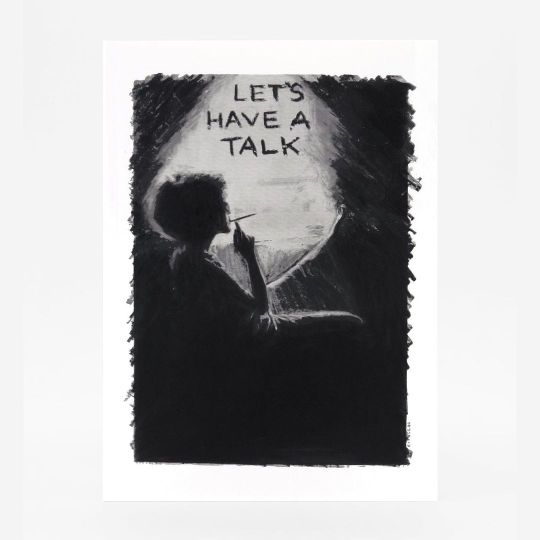
Spreads from 'Let's Have a Talk: Conversations with Women on Art and Culture, Interviews by Lauren O'Neill-Butler,' launching today, 5/15 from 3–5 PM @artbookps1 Bookstore For this in-person event, O’Neill-Butler will be in conversation with art historian and curator Katy Siegel, discussing the book and the art of the interview. The talk will be followed by a drink special hosted by @minas.nyc restaurant, across the hall from the Bookstore. Interviewees include: Judy Chicago, Shannon Ebner, Carolee Schneemann, Lucy R. Lippard, Joan Semmel, Liz Deschenes, Eleanor Antin, Andrea Fraser, Anohni, Claudia Rankine, Lorrie Moore, Adrian Piper, fierce pussy, Nan Goldin, Nell Painter, Frances Stark, Sara Greenberger Rafferty, Alex Bag, Agnès Varda, Lisi Raskin, Mary Mattingly, Carol Bove, Jennifer West, Aki Sasamoto, Mary Ellen Carroll, Rebecca Solnit, Rita McBride and Kim Schoenstadt, Karla Black, Julia Bryan-Wilson, Lynda Benglis, Sturtevant, Rachel Foullon, Ellie Ga, Lisa Tan, Mira Schor, Jo Baer, Ruby Sky Stiler, Suzanne Lacy, Rebecca Warren, Katy Siegel, Marlene McCarty, Rachel Mason, Mary Kelly, Dianna Molzan, Lynne Tillman, Polly Apfelbaum, Jesse Jones, Dorothea Rockburne, Sarah Crowner, Lucy Skaer, Sophie Calle, Mary Beth Edelson, W.A.G.E., Mary Heilmann, Pauline Oliveros, Kathryn Andrews, Jessamyn Fiore, Aura Rosenberg, Lucy McKenzie, Rhonda Lieberman, Lucy Dodd, Hong-Kai Wang, Sakiko Sugawa, Beverly Semmes, Virginia Dwan, Jeanine Oleson, Tauba Auerbach, Renee Green, Iman Issa, Monir Shahroudy Farmanfarmaian, Joan Jonas, Yoko Ono, Donna J. Haraway and more. #letshaveatalk #laurenoneillbutler #katysiegel @karmakarma9 @karmabookstore @loneillbutler @katysiegel.88 #artbookevents https://www.instagram.com/p/CdlXbMxL4Ub/?igshid=NGJjMDIxMWI=
6 notes
·
View notes
Photo

Dennis Hopper Gallery Owner Virginia Dwan, Los Angeles 1964
72 notes
·
View notes

